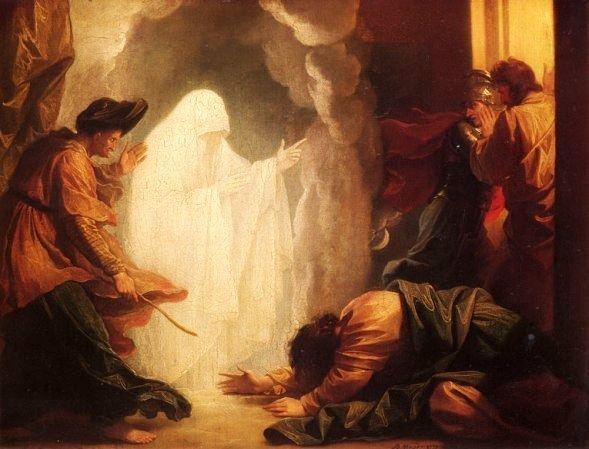 | ||
Similar Three Witches, Aífe, Horatio Hornblower, Medea, Nicholas Flamel | ||
The witch of endor what really happened b burt
In the Hebrew Bible, the Witch of Endor (or Medium of Endor) was a medium who apparently summoned the prophet Samuel's spirit, at the demand of King Saul of the Kingdom of Israel in the First Book of Samuel, chapter 28:3–25. The witch is absent from the version of that event recounted in the deuterocanonical Book of Sirach (46:19–20). She is called in Biblical Hebrew אֵ֥שֶׁת בַּֽעֲלַת־אֹ֖וב בְּעֵ֥ין דֹּֽור (’êšeṯ ba‘ălaṯ-’ōḇ bə-‘Êndōr), "a woman who has a familiar spirit at Endor".
Contents
- The witch of endor what really happened b burt
- witch of endor 1 in depth bible study
- Story
- Judaism
- Christianity
- Spiritualism
- In popular culture
- References
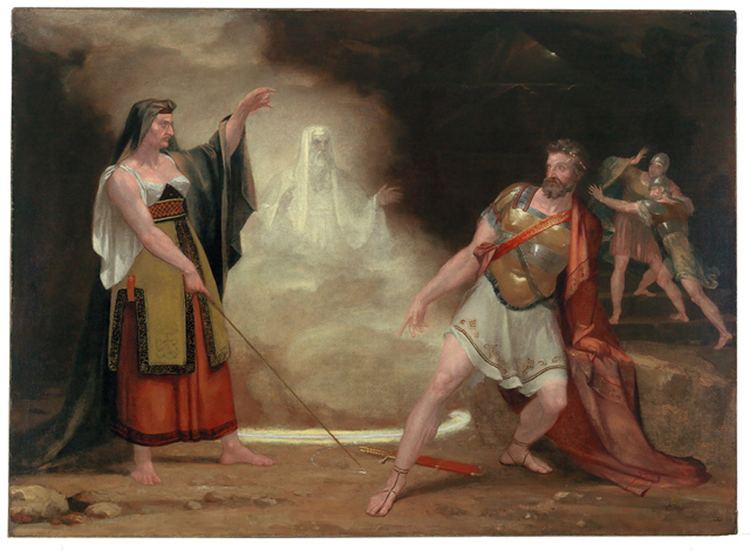
witch of endor 1 in depth bible study
Story
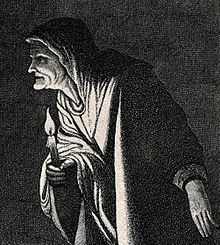
When Samuel dies, he is buried in Ramah. Saul, the current King of Israel, seeks wisdom from God in choosing a course of action against the assembled forces of the Philistines. He receives no answer from dreams, prophets, or the Urim and Thummim. Having driven out all necromancers and magicians from Israel, Saul searches for a medium anonymously and in disguise. His search leads him to a woman of Endor, who claims that she can see the ghost of Samuel rising from the abode of the dead. The voice of the prophet's ghost, after complaining of being disturbed, berates Saul for disobeying God, and predicts Saul's downfall. The spirit reiterates a pre-mortem prophecy by Samuel, adding that Saul will perish with his whole army in battle the next day. Saul is terrified. The next day, his army is defeated as prophesied, and Saul commits suicide.
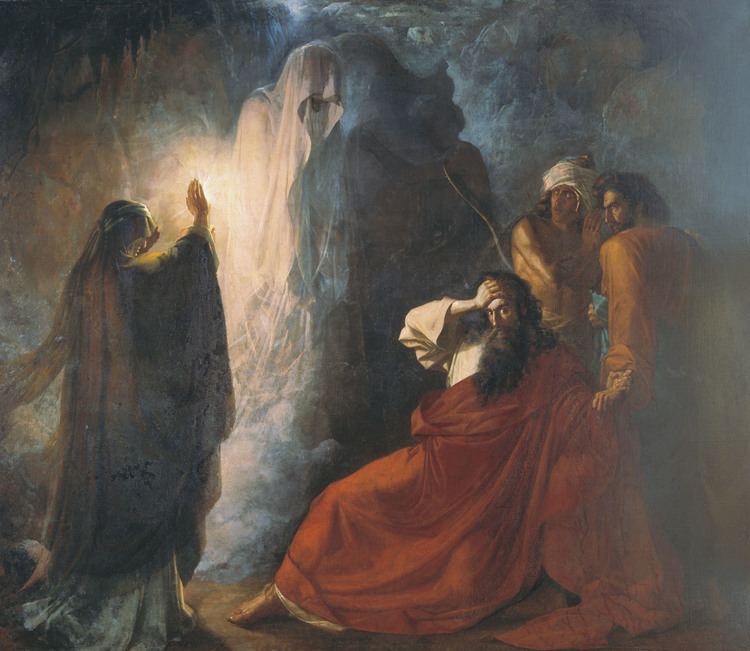
Although Saul is depicted as an antagonist to witches and diviners, the Witch of Endor generally is portrayed sympathetically; she comforts Saul when she sees his distress and insists on feeding him before he leaves.
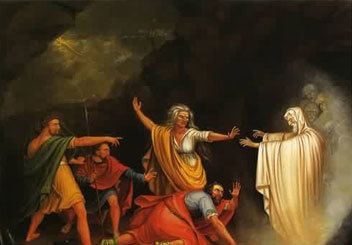
The woman is described as "a woman with an ob" (אוֹב, a talisman or perhaps wineskin) in Hebrew, which may be a reference to ventriloquism, and she claims to see "elohim arising" (plural verb) from the ground.
Judaism
The Yalkut Shimoni (11th century) identifies the anonymous witch as the mother of Abner. Based upon the witch's claim to have seen something, and Saul having heard a disembodied voice, the Yalkut suggests that necromancers are able to see the spirits of the dead but are unable to hear their speech, while the person for whom the deceased was summoned hears the voice but fails to see anything.
Christianity
The Church Fathers and some modern Christian writers have debated the theological issues raised by this text. The story of King Saul and the Medium of Endor would appear at first sight to affirm that it is possible for humans to summon the spirits of the dead by magic.
In the Septuagint (2nd century BCE) the woman is described as a "ventriloquist", possibly reflecting the consistent view of the Alexandrian translators concerning "demons... which exist not". However Josephus (1st century) appears to find the story completely credible (Antiquities of the Jews 6,14).
Medieval glosses to the Bible suggested that what the witch actually summoned was not the ghost of Samuel, but a demon taking his shape or an illusion crafted by the witch. Martin Luther, who believed that the dead were unconscious, read that it was "the Devil's ghost", whereas John Calvin read that "it was not the real Samuel, but a spectre."
Spiritualism
Spiritualists have taken the story as evidence of spirit mediumship in ancient times. The story has been cited in debates between Spiritualist apologists and Christian critics. "The woman of Endor was a medium, respectable, honest, law abiding, and far more Christ-like than" Christian critics of Spiritualism, asserted one Chicago Spiritualist paper in 1875.
In popular culture
The witch appears as a character in oratorios (including Mors Saulis et Jonathae (c. 1682) by Charpentier, In Guilty Night: Saul and the Witch of Endor (1691) by Henry Purcell, Saul (1738) by Handel on the death of Saul, and Le roi David (1921) by Honegger), in dance music (The Witch of Endor (1969) by Louis Hardin) and operas (David et Jonathas (1688) by the afore-mentioned Charpentier and Saul og David (1902) by Carl Nielsen).
A year after the death of his son at Loos, Rudyard Kipling wrote a poem called "En-Dor" (1919), about supposed communication with the dead. It concludes,
The Martha Graham Dance Company premiered The Witch of Endor in 1965 at the 54th Street Theater in New York. A one-act work, it had choreography and costumes by Martha Graham, music by William Schuman, sets by Ming Cho Lee, and lighting by Jean Rosenthal.
In Endor by Shaul Tchernichovsky, describing King Saul's encounter with the Witch of Endor, is considered a major work of modern Hebrew poetry. Tchernichovsky particularly identified with the character of Saul, perhaps due to his own name, and the poem expresses considerable empathy to this King's tragic fate.
An episode in the 1932 radio program NBC Mystery Serial written by Carlton E. Morse was called The Witch of Endor, and included a character who said she was a witch; the story was set in "a sparsely populated residential district in the suburbs of San Francisco called Endor Park".
A ship named the Witch of Endor was also featured in the Horatio Hornblower book "Flying Colours". The cutter, with an armament of 10 guns, was used by Hornblower to escape from France after he was captured.
The Witch of Endor is a ship in Babylon's Ashes, the sixth book of The Expanse series by James. S. A. Corey. She is destroyed early in book six on the orders of Marco Inaros, chief antagonist of the books five and six (Nemesis Games and Babylon's Ashes) for mutiny.
